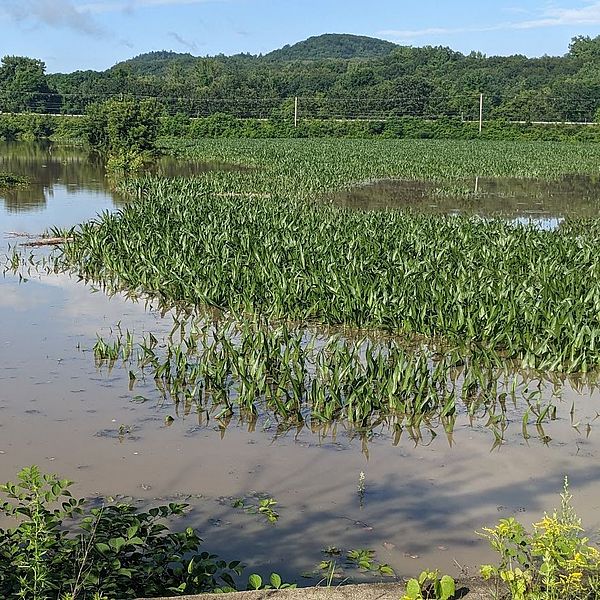Over the past month, severe rainstorms have made life difficult for the Monadnock region’s farmers and residents, with flooded fields and washed-out roads. At the same time, smoke from Canadian wildfires has reduced air quality to its lowest in decades. The root cause of all this extreme weather is climate change, which also gave July 2023 the unfortunate distinction of being the hottest month on record across the globe. Perhaps more so than in the past, the effects of our warming climate are becoming apparent to everyone. Never mind the climate scientists or distant glaciers; the evidence that we are heading toward an uncertain and worrisome future is right before our eyes.
In our region and throughout New England, small farmers are in danger of losing their livelihoods, and the rest of us are in danger of losing the backbone of local food production. These hardworking entrepreneurs are reeling from flooding that has destroyed much of their summer crop. It is hard to overstate the impact of these storms on Monadnock-region farmers, both financially and in terms of mental health.
The Concord Monitor recently spoke to small farmers in the region following July’s rains. Their words speak to the difficulties of farming in the age of climate change.
From the Concord Monitor:
Kristen Gowen, owner of Tamarack Farm in Acworth, grows hay on the banks of the Cold River. She estimates that the floods destroyed about half of her crop. The water swept up a few of her recently harvested hay bales, which each weigh around 1,200 pounds.
“It’s literally your hard work and your money just floating downstream, and there is nothing you can do about it,” she said.
…“One of my fields was under eight feet of water,” said John Janiszyn, owner of Pete’s Stand in Walpole. “My son and my wife went canoeing on one of our fields.”
Janiszyn said that about 12 to 15 acres of his farmland were underwater, which he estimates will lead to a crop loss of up to 20%. He was “shocked” by the severity of the flood, saying that previous hurricanes had not hurt his fields as much as this week’s flooding did.
Farmers said that having crops exposed to flood water creates food safety risks, such as the possible spread of E.coli bacteria.
Janiszyn is worried that the flood water could have exposed his crops to Phytophthora capisci, a bacteria that can ravage vegetables like tomatoes, peppers, squash and pumpkins and is spread through equipment carrying contaminated soil.
“Those fields are going to have that disease now in it probably for the next 10 years,” he said.
Unlike health crises of the past, there is no hiding from the disasters brought on by climate change. As Jonathan Mingle wrote in the New York Times days after the flooding of Montpelier, Vermont, “As the world heats up, our benchmarks are becoming increasingly useless – as useless as the notion that there are any places to move to and avoid climate change.” He continues, “For each degree Celsius of warming, the atmosphere holds 7 percent more water vapor, driving the extreme precipitation events in New England that have increased by 55 percent since 1958…”
The point of Mingle’s piece is that Americans must confront climate change, and even regions once assumed to be refuges – New England especially – are at risk. Even Canada will not be spared, as the wildfires demonstrate.
To confront this crisis, Americans need to summon the will for real change and support efforts both to store more carbon in forests and soil and to mitigate the effects of the extreme weather to come. At the Monadnock Conservancy, we do this by conserving large tracts of land, which also ensures pathways for wildlife and plant species to migrate north, following their preferred habitats as they shift to higher latitudes. We also work to conserve farmland, both to prevent its conversion and to give farm families capital to pay down debt, modernize, grow the business, or plan for succession to the next generation of farmers.
While each of these efforts will undoubtedly be part of the solution, we also need to center climate action in federal, state, and local policy. Reducing our dependence on fossil fuels, expanding renewable energy in appropriate locations, and increasing support for the natural climate solutions inherent in land conservation are all vital to protecting the region for our children and grandchildren.
